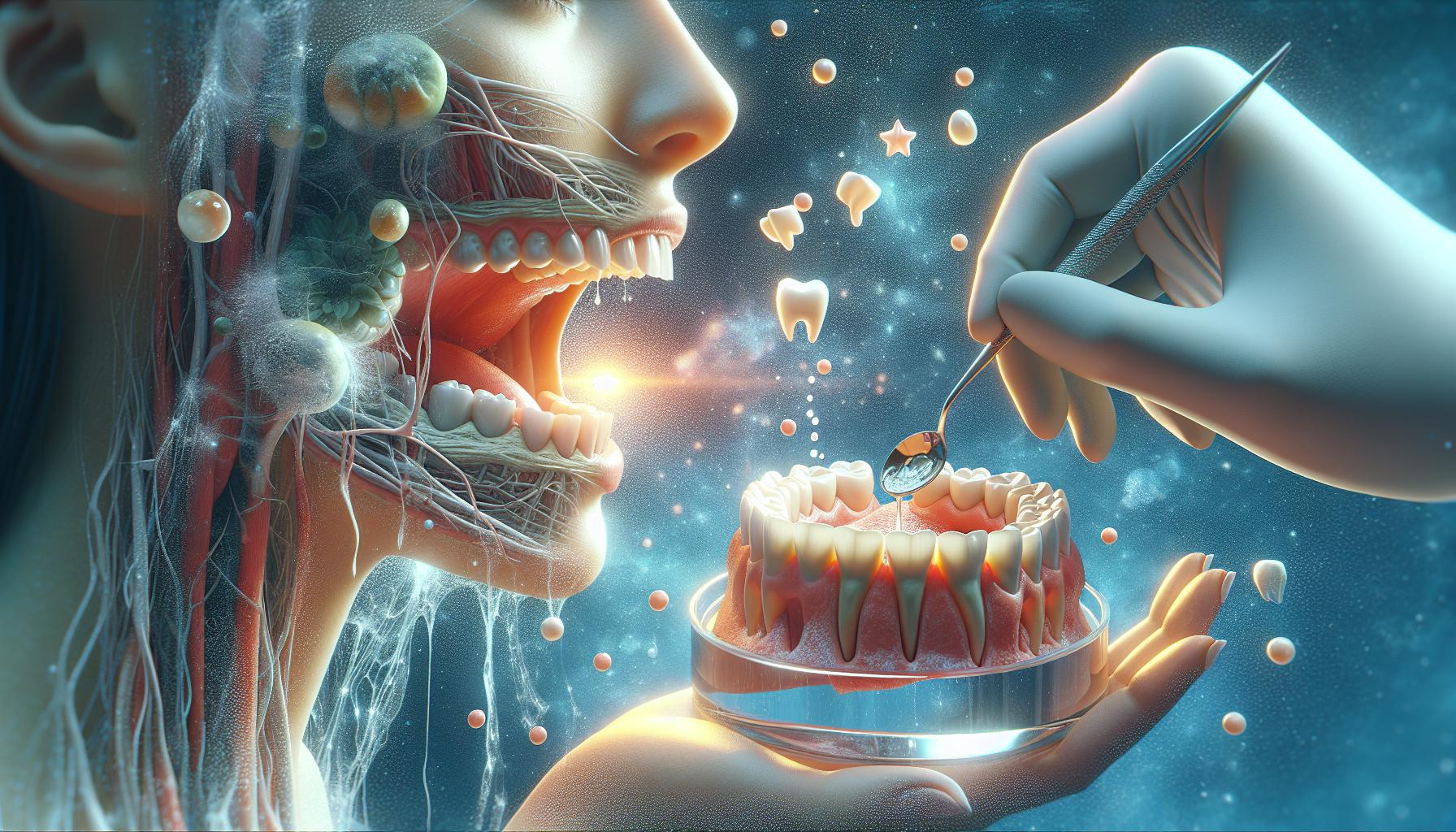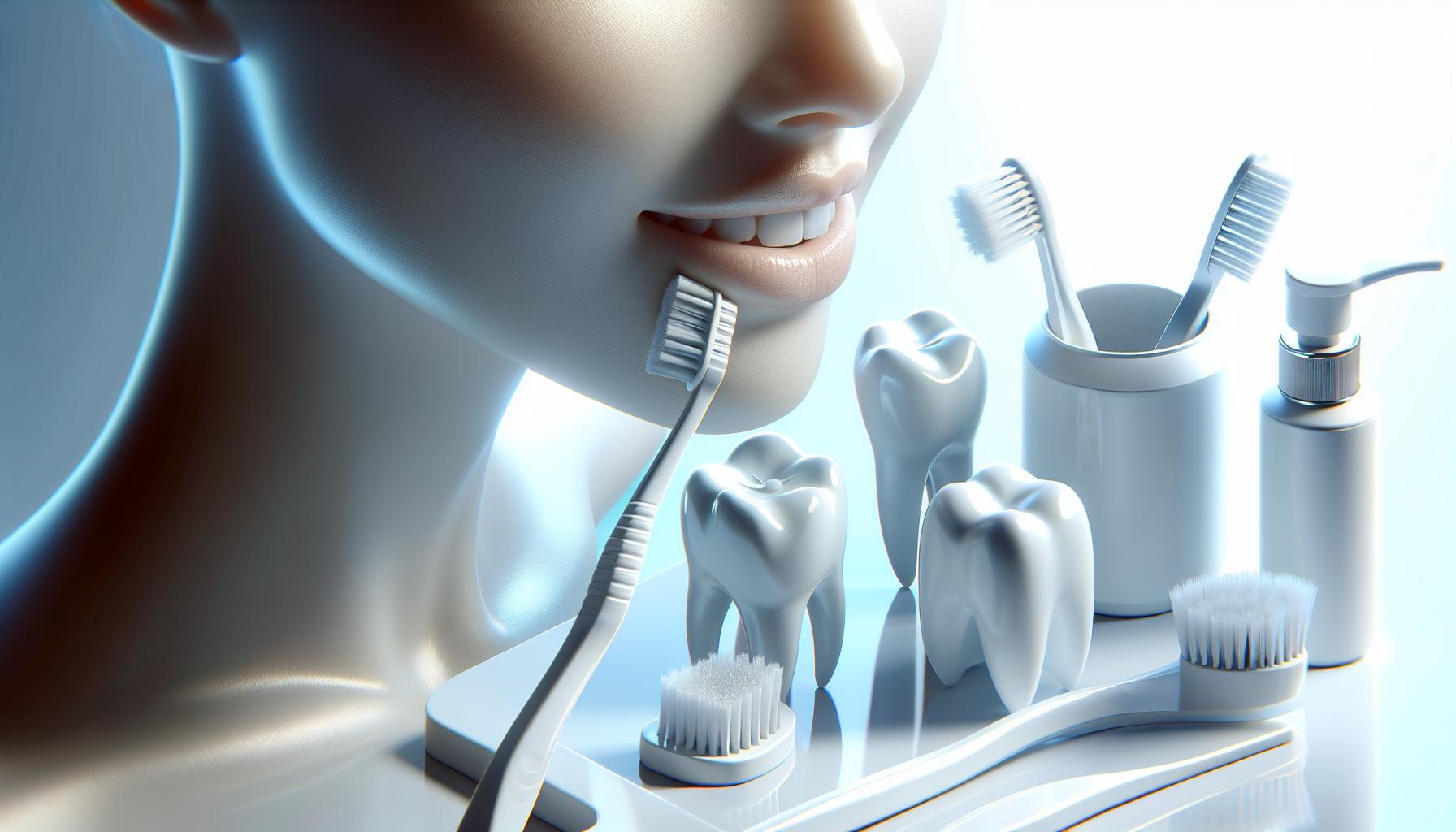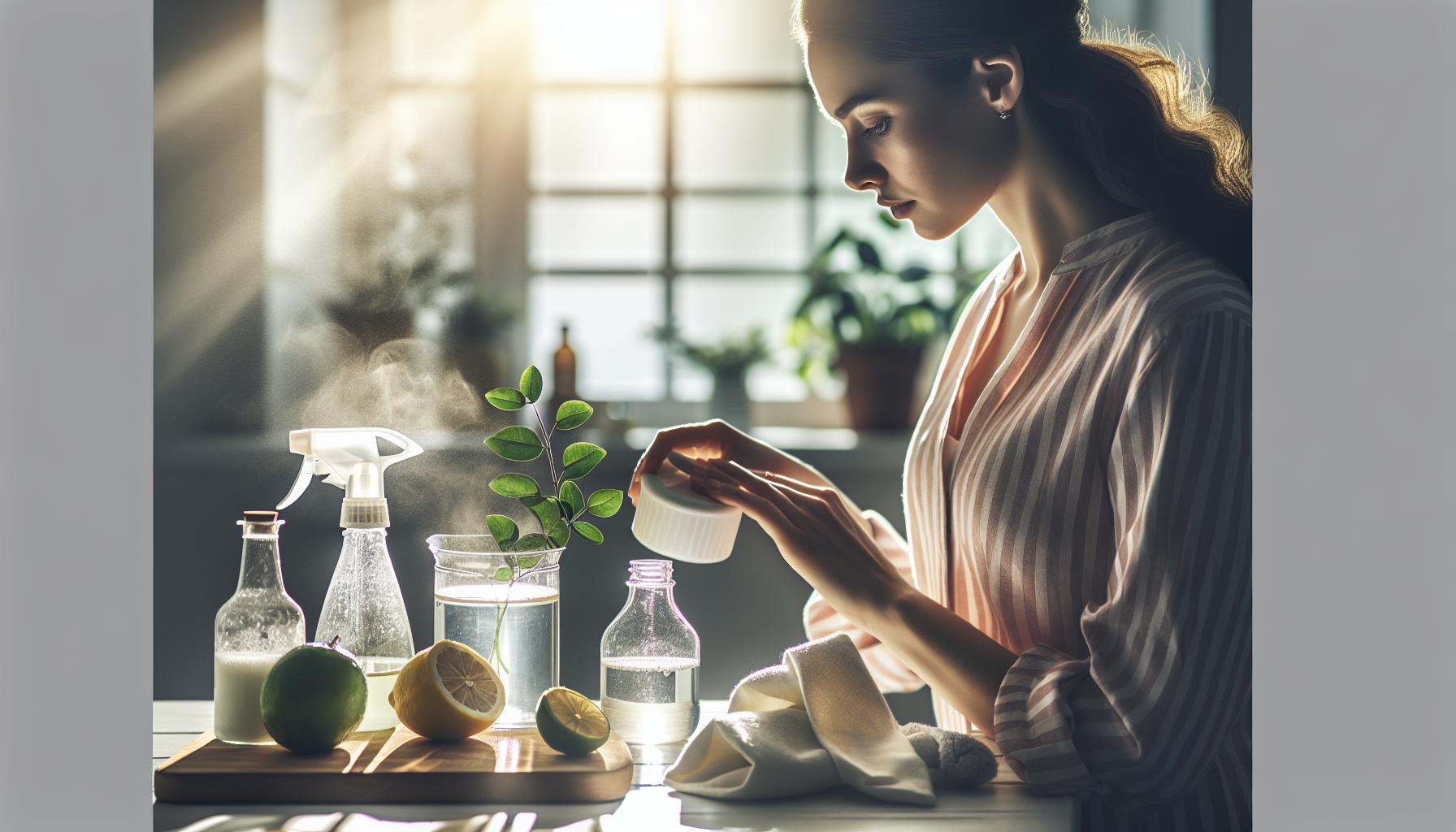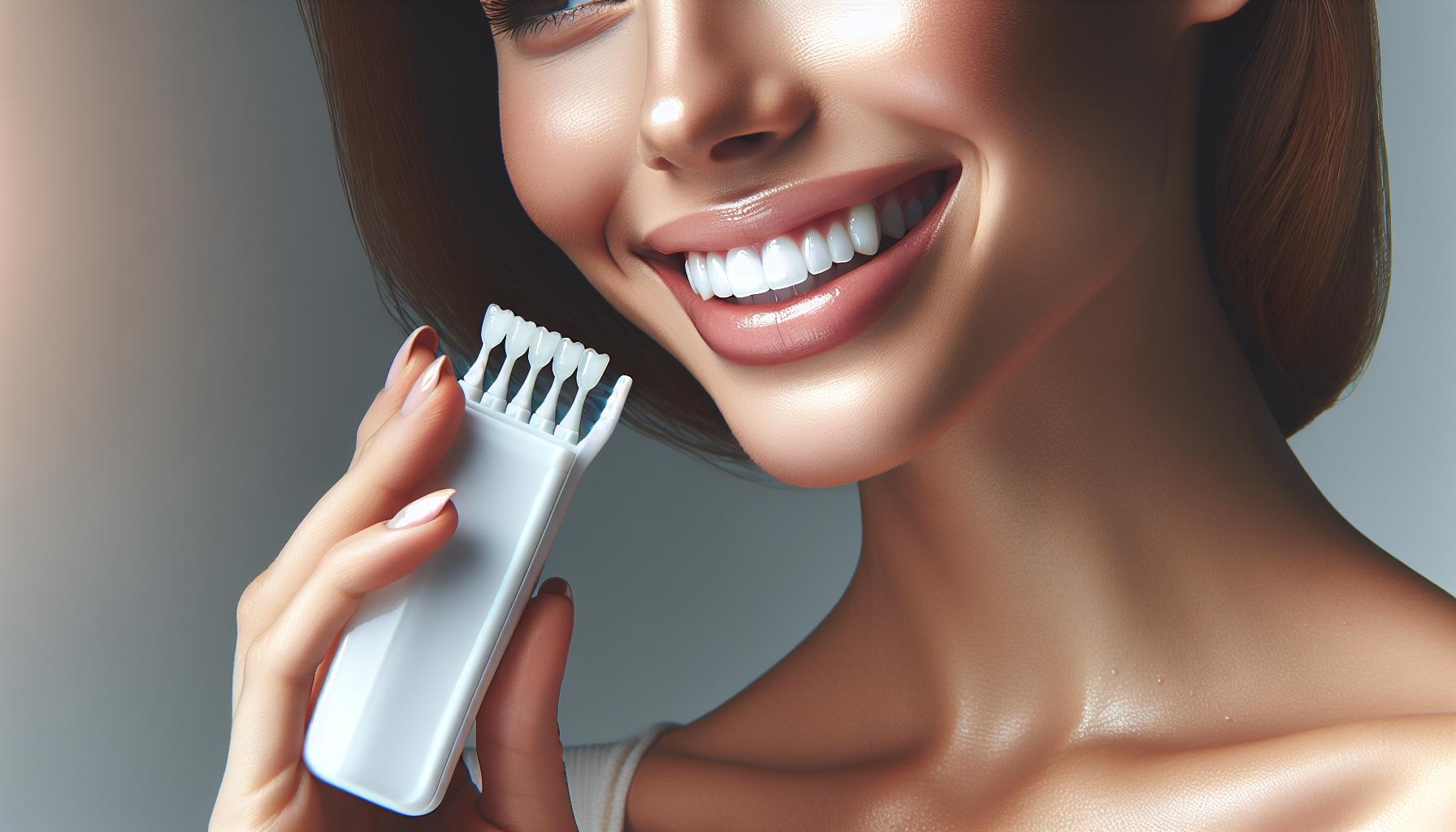Are those daily cups of tea leaving unwelcome stains on your teeth? For tea enthusiasts, enjoying a warm brew shouldn’t come at the cost of a shining smile. Discover effective methods to combat tea-related discoloration and maintain your pearly whites, ensuring your love for tea doesn’t tarnish your confidence.
Understanding the Causes of Tea-Stained Teeth
Did you know that the deep hues of your favourite cup of tea could be the culprit behind the dulling of your pearly whites? Regular tea drinkers often grapple with the intriguing yet vexing phenomenon of tea-stained teeth. Understanding the underlying causes of this common issue is the first step toward effective stain removal. Let’s dive into the science behind those stubborn discolorations!
Why Does Tea Stain Teeth?
Tea contains a variety of compounds that contribute to its rich flavor and color,most notably tannins. These tannins are polyphenolic compounds that can easily cling to dental enamel, leading to discoloration over time. The severity of staining can vary greatly depending on factors such as the type of tea, brewing time, and even the acidity level. Here’s a brief overview:
- Tannins: Found in nearly all types of tea, they can cause a sticky film on the teeth that promotes staining.
- Type of Tea: Black tea has the highest tannin content, followed by green and herbal teas, which are less likely to stain teeth.
- Brewing Time: Longer brewing times can extract more tannins, increasing the potential for stains.
- Acidity Levels: Acidic beverages can erode enamel,making your teeth more susceptible to staining.
Other Contributing Factors
Staining from tea isn’t solely due to the beverage itself; your lifestyle choices also play a meaningful role. For example, individuals who consume a high-sugar diet or other staining foods like berries and red wine may find that their teeth darken more quickly.
Additionally, oral hygiene habits are critical.Infrequent brushing or neglecting dental check-ups can allow stains to build up, leading to a more pronounced discoloration. Here’s a table highlighting common factors affecting teeth staining:
| Factor | Impact on Teeth Staining |
|---|---|
| Type of Tea | Higher tannin teas cause more staining. |
| Brewing Technique | Longer brew times increase stain potential. |
| Diet | High-sugar and acidic foods worsen discoloration. |
| Oral hygiene | Poor habits lead to increased staining. |
By understanding these causes, tea enthusiasts can formulate a proactive approach to maintaining their bright smiles. Whether through adjusting tea-drinking habits or enhancing oral care routines, knowing what leads to staining is half the battle in finding effective solutions for tea-stained teeth.
Gentle Oral Care: Brushing Techniques to Combat Stains
Understanding the Impact of Tea on Dental Health
Did you know that the delightful habit of sipping tea can lead to stubborn teeth stains over time? Many tea enthusiasts may not realize that tannins found in tea can cling to enamel, leaving unsightly discolorations. However, incorporating gentle oral care techniques into your daily routine can help you combat these stains effectively. learning how to properly brush your teeth is essential to maintaining a bright smile while still enjoying your favorite brews.
Effective Brushing Techniques
To maximize stain removal potential while protecting your enamel,consider the following brushing techniques:
- Choose the Right Toothbrush: opt for a soft-bristled toothbrush to prevent enamel erosion and gum irritation,especially if you consume tea frequently.
- Master the 2-Minute Rule: Take at least two minutes for brushing, dividing your mouth into quadrants. Spend approximately 30 seconds on each section to ensure thorough cleaning.
- Use Proper Angles: Position your toothbrush at a 45-degree angle to your gums.This technique helps in effectively cleaning along the gum line and between teeth,where stains may accumulate.
- Gentle Circular Motions: Rather than a back-and-forth motion, use small circular movements while brushing. This method is gentle on the enamel and gums while being effective in removing surface stains.
| Brushing Technique | Description |
|---|---|
| Soft Bristles | Helps prevent enamel damage and gum irritation. |
| 45-Degree Angle | Effective at cleaning along the gum line. |
| Circular Motions | Gentle on your teeth; removes surface stains efficiently. |
Additional Tips for Tea Lovers
Beyond brushing, there’s more you can do to mitigate tea stains.Rinsing your mouth with water promptly after enjoying a cup of tea can help wash away any tannins that may adhere to your teeth. Additionally, consider using whitening toothpaste once or twice a week to enhance stain removal without compromising enamel health. Regular dental check-ups are also crucial—they allow professionals to provide deeper cleaning and personalized advice on maintaining your smile.
By adopting these gentle oral care practices, you can continue to savor your favorite teas while minimizing the impact on your dental aesthetics. Embrace these techniques as part of your ongoing strategy for how to remove teeth stains from tea and enjoy the benefits of a radiant smile.
Natural Remedies: Home Solutions for Stain Removal
Unleashing the Power of Natural Remedies
For tea enthusiasts, the enjoyment of a comforting cup can sometimes come at a cost: unsightly stains on teeth. Fortunately, nature offers a treasure trove of solutions to combat these discolorations without resorting to harsh chemicals. By harnessing simple, accessible ingredients that you may already have at home, you can effectively diminish those pesky tea stains and maintain a dazzling smile.
- Baking Soda Paste: This common kitchen staple is renowned for its gentle abrasive properties. Combine a tablespoon of baking soda with a few drops of water to create a thick paste. apply it to your toothbrush and gently scrub your teeth for about two minutes. Rinse thoroughly. this method can help lift surface stains caused by tea while also freshening your breath.
- Hydrogen peroxide Rinse: Hydrogen peroxide has natural whitening properties. Mix equal parts of hydrogen peroxide and water, swish it around your mouth for about 30 seconds, and then rinse fully. Use this remedy sparingly—once or twice a week—to avoid potential sensitivity.
- Strawberries and Baking Soda Scrub: The malic acid in strawberries can definitely help lighten stains while baking soda adds extra polishing power. Mash a couple of ripe strawberries, mix them with baking soda, and apply this mixture to your teeth.Leave it on for five minutes before brushing it away for a fruity and effective whitening treatment.
- Coconut Oil Pulling: This ancient practice involves swishing coconut oil in your mouth for 10–20 minutes. Not only does it help in reducing plaque buildup, but it can also lead to brighter teeth over time. Just take a tablespoon of coconut oil and swish it around, ensuring it reaches all areas of your mouth.
Regular Maintenance for Lasting Results
In addition to these natural remedies, maintaining good oral hygiene is crucial. Regular brushing with fluoride toothpaste and flossing can greatly reduce the accumulation of tea stains in the first place. Curbing the frequency of tea consumption—at least between dental cleanings—can also help maintain a brighter smile. When indulging in your favorite tea, consider using a straw. This simple act keeps the tea from contacting your teeth directly, minimizing the potential for staining.
Integrating these natural remedies into your dental care routine not only promotes a healthier smile but also embraces a holistic approach to your overall well-being.With consistent care and these effective home solutions, you can revel in your love for tea without the worry of tarnished teeth.
Professional Treatments: When to Consult Your Dentist
Did you know that even the most passionate tea lovers can face stubborn teeth stains over time? While home remedies and whitening products can do wonders for your smile, there come times when even the most dedicated efforts yield lackluster results. If you find yourself grappling with persistent tea stains, it might potentially be time to consider professional treatments.Understanding when to consult your dentist can definitely help you maintain that radiant smile you’ve worked hard for.
Recognizing Stubborn Stains
Tea enthusiasts often enjoy a variety of brews,each contributing to the potential discoloration of teeth. If you’ve noticed that your typical whitening toothpaste isn’t cutting it, you might be dealing with deeper stains that require more than regular maintenance. Here are some signs that warrant a visit to your dentist:
- Persistent discoloration: If stains remain visible even after using over-the-counter whitening solutions.
- Uneven color: If certain areas of your teeth are discolored more than others.
- Tooth sensitivity: Increased sensitivity may indicate underlying issues that need professional evaluation.
- Gum health concerns: Red, swollen gums or any bleeding can complicate stain removal and necessitate professional intervention.
Professional Treatment Options
When its time to go beyond DIY methods, your dentist can offer effective treatments tailored to your specific needs. Some of the popular professional options include:
| Treatment | Description | Benefits |
|---|---|---|
| In-Office Whitening | Using high-concentration bleaching agents under professional supervision. | Fast results, significant shade betterment. |
| Custom Whitening Trays | custom-fitted trays filled with professional-grade whitening gel. | Effective, pleasant, and can be used at home over several days. |
| Porcelain Veneers | Slim shells that cover the front of teeth, providing a uniform, stain-free appearance. | Can transform your smile instantly, ideal for severe discoloration. |
Additional Considerations
before jumping into treatments, discuss your dental history and any concerns you may have with your dentist.They can provide insights tailored to your medical and dental background. It’s also crucial to maintain good oral hygiene and limit your intake of stain-causing beverages after professional treatment to ensure your efforts pay off in the long run.
Remember, managing stains caused by tea goes beyond aesthetic appeal; it often relates to your overall oral health. Regular dental check-ups can definitely help catch any issues early and keep your smile looking its best.
Preventing Future Stains: Practical Tips for Tea lovers
Did you know that nearly half of all tea drinkers experience some form of teeth staining? The very beverage that brings joy and comfort can also leave its mark—a permanent reminder of your love for tea.However, with a few mindful practices, you can savor your favorite brews while keeping your smile radiant. Let’s explore how to fend off those pesky stains, enabling you to fully indulge in the delightful world of tea without the worry of discoloration.
Incorporate Stain-Resistant Techniques
Rather than solely relying on after-tea routines, consider integrating some stain-resistant techniques into your tea-drinking rituals. Here are a few strategies to help you maintain a bright sparkle in your smile:
- Mind Your Steeping Time: the longer you steep your tea, the more tannins are released.Opt for a shorter infusion time to reduce staining potential.
- Switch to Lighter Teas: herbal or white teas have fewer tannins compared to black teas. Experiment with different blends to find your favorites that are easier on your enamel.
- Use a Straw: While it may seem unconventional, sipping your tea through a straw can minimize direct contact with your teeth, reducing the chance of staining.
Maintain a Balanced Oral Hygiene Routine
Combining these proactive measures with a solid dental care routine is essential for preventing stains. Here are some recommendations to keep in mind:
- Brush Regularly: Aim to brush your teeth at least twice a day with a fluoride toothpaste. Consider using a whitening toothpaste to combat surface stains effectively.
- Floss Daily: Flossing helps eliminate food particles and plaque that can exacerbate staining, keeping your gums healthy and your teeth brighter.
- Rinse with Water: After enjoying your tea, swish some water in your mouth. This simple act can help wash away leftover tannins and pigments.
Timing Matters: Avoid Staining After Tea
the timing of your dental care routine can make a significant difference in preventing stains. Consider the following tips to optimize your approach:
| Activity | Best Timing |
|---|---|
| Brushing Teeth | Wait at least 30 minutes after tea to allow enamel to re-harden. |
| Rinse with Water | Immediately after consuming tea. |
| Using Mouthwash | Once a day, but avoid right after tea; instead, wait for the enamel’s recovery. |
By implementing these strategies along with mindful tea consumption, you can truly relish every cup without fear of staining. Remember, knowledge is power, and with these practices, you can ensure your teeth remain as vibrant as your love for tea.
Choosing the Right Dental Products: What Works Best?
When it comes to maintaining a bright smile, choosing the right dental products is crucial, especially for those who enjoy tea. Regular tea consumption can lead to stubborn stains, primarily caused by tannins. However, effective dental products can make a significant difference in combating these stains and achieving a brighter smile.
Understanding Your Options
Various dental products are designed specifically to tackle teeth stains from beverages like tea. Here are some of the most effective options to consider:
- whitening Toothpastes: Formulated with mild abrasives and chemical agents, these toothpastes can help remove surface stains gradually. Look for formulations that target tannin and are safe for frequent use.
- Whitening Gels: Fast-acting products, such as those containing hydrogen peroxide, provide a significant boost in stain removal. Applying a whitening gel booster alongside your normal toothpaste can enhance the cleaning process during regular brushing.
- Activated Charcoal: While somewhat controversial, activated charcoal is believed to absorb impurities and help reduce stains. Use it sparingly to avoid damaging enamel.
- Stain Removing Strips: These are specifically designed for whitening teeth and can be more convenient for some users, providing consistent results over time.
Best Practices for Use
Incorporating these products into your dental care routine is essential for effective stain removal. Here are some practical tips:
- Brush Regularly: Utilize a whitening toothpaste daily while occasionally using a whitening gel booster to combat tea stains efficiently.
- Avoid Immediate Staining Foods: After drinking tea, consider rinsing your mouth with water to reduce the potential for stains.
- Professional Cleanings: Schedule regular dentist visits for professional cleanings to remove deep-set stains that at-home products can’t tackle.
By following a consistent oral hygiene routine with the right dental products and practices, tea enthusiasts can enjoy their favorite beverage while keeping their smiles bright.Whether you’re looking for solutions to remove tea stains or simply wanting to enhance your dental care regimen,the right choices can make all the difference.
the Role of Diet: Foods that Help Brighten Your Smile
One of the exciting aspects of maintaining a vibrant smile is recognizing how your dietary choices play a crucial role in oral health. While tea enthusiasts often grapple with pigmentation from their beloved brews,embracing a proactive diet can substantially counteract stains and promote a radiant smile.
Foods to Incorporate for a Brighter Smile
Certain foods can definitely help in minimizing the impact of teeth-staining beverages like tea, and their inclusion in your daily meals can create a beneficial cycle of oral care. here are some standout options:
- Crisp Fruits and Vegetables: Apples, carrots, and celery are especially effective at naturally cleaning teeth. Their fibrous texture stimulates saliva production, which aids in neutralizing staining acids.
- Dairy Products: Foods rich in calcium, such as cheese and yogurt, not only strengthen your enamel but also help wash away food particles and reduce plaque buildup.
- Leafy Greens: Spinach and lettuce are not only nutritious but also contain natural compounds that create a barrier on teeth, preventing stains from settling.
- Green Tea: Ironically, switching from black to green tea can be beneficial! Green tea has lower tannin levels, which reduces the likelihood of staining while still offering health benefits.
The Power of Antioxidants
Along with fibers and calcium, incorporating antioxidants into your diet can also combat dental discoloration. Foods rich in antioxidants such as berries and dark chocolate can not only enhance your smile but also support overall health. The pigments in berries might stain in their own right, but they also promote healthy gums and reduce inflammation. Here’s a simple table to illustrate some antioxidant-rich foods:
| Food | Benefit for Teeth |
|---|---|
| Blueberries | Rich in antioxidants, fighting inflammation |
| Dark Chocolate | Cocoa contains compounds that fight bacteria |
| Green Tea | Lower tannin levels, less staining |
Making informed choices about your diet does more than just help when considering how to remove teeth stains from tea; it empowers you to cultivate a healthier mouth overall. Coupling these food choices with regular dental hygiene practices will not only keep stains at bay but also enhance your overall well-being. Staying ahead of stains before they become a problem can definitely help every tea enthusiast enjoy their favorite brew without compromising their smile!
Maintaining a Bright Smile: Daily Habits for Tea Drinkers
Did you know that enjoying your favorite cup of tea can lead to teeth stains that make you feel self-conscious? For tea lovers, the aesthetics of a bright smile may seem like a tough challenge, but with the right daily habits, you can maintain a dazzling grin even while indulging in your favorite brews. Here are some essential practices that can definitely help you enjoy your tea without sacrificing the brightness of your smile.
Rinse After sipping
One of the simplest methods to combat discoloration is to rinse your mouth with water after finishing your tea. This helps wash away tannins and pigments that contribute to staining. Implement this habit by keeping a small bottle of water handy while you sip, making it easy to rinse anytime. Consider creating a routine where you rinse your mouth immediately after your last gulp, reinforcing this practice into your tea-drinking experience.
Incorporate Teeth-Friendly Ingredients
While savoring your tea,think about enhancing it with teeth-friendly add-ins! Some options include:
- Ginger: Not only does it add a refreshing flavor,but ginger also has antibacterial properties that can assist in maintaining oral health.
- Turmeric: Surprisingly, this spice has been praised for its anti-inflammatory properties and may actually help brighten teeth.Adding a small pinch to your cup can be beneficial.
- Cinnamon: known for its natural antibacterial qualities, cinnamon can also combat bad breath after your tea sessions.
These ingredients not only enhance flavor but can also help fortify your dental health,giving you a dual benefit.
Regular Dental Care Routine
In the journey of maintaining a bright smile,daily dental care is vital. ensure that you stick to a consistent routine, which includes:
| Activity | Frequency | Benefits |
|---|---|---|
| Brushing | Twice a day | Removes surface stains and promotes gum health. |
| Flossing | Once a day | Helps eliminate plaque and food particles between teeth. |
| Use of Mouthwash | Once a day | Offers additional stain-fighting properties and freshens breath. |
Combining these activities not only keeps your teeth clean and white but also rejuvenates your mouth, ensuring that the effects of daily tea-drinking don’t have long-term consequences on your smile.
By following these actionable tips,you can fully enjoy the rich flavors of your favorite teas while effectively managing and preventing tooth stains. With a little diligence,your smile can remain as bright as your passion for tea!
Frequently asked questions
How to Remove Teeth Stains from Tea: Solutions for Tea Enthusiasts?
To remove teeth stains caused by tea, consider using a combination of whitening toothpaste, baking soda, and regular dental cleanings. These methods can effectively combat discoloration without needing harsh procedures.
As a tea enthusiast,it’s essential to be proactive about maintaining dental health. Regularly brushing with a whitening toothpaste helps remove surface stains.Additionally, using baking soda can enhance the whitening effect due to its mild abrasive qualities. For longstanding stains, professional dental cleanings are recommended to achieve optimal results.
What causes teeth stains from tea?
Teeth stains from tea are primarily caused by tannins, which are compounds found in tea that can adhere to enamel and lead to discoloration. Both black and herbal teas can contribute to this issue.
When you sip tea, these tannins can penetrate the enamel, resulting in brown or yellowish stains over time. Maintaining good oral hygiene can definitely help reduce their accumulation. Consider rinsing your mouth with water after consuming tea to minimize staining.
Can I use home remedies to remove tea stains?
Yes, home remedies like baking soda, lemon juice, and hydrogen peroxide can be effective for removing tea stains. however, they should be used cautiously to avoid enamel damage.
Baking soda, for instance, can help scrub away surface stains effectively when used in moderation.Mixing it with lemon juice provides a natural whitening effect, but be aware of the acidity which can erode enamel if overused. Always consult with your dentist before trying new remedies.
Why do some teas stain teeth more than others?
Some teas, particularly black tea and green tea, contain higher levels of tannins than others, making them more likely to stain teeth. Herbal teas can also contribute but typically to a lesser degree.
For tea lovers, shifting to less tannin-rich varieties, like white or oolong tea, may help in reducing staining.Additionally, you can mitigate stains by having water after tea or using a straw to limit contact with teeth.
Can professional teeth whitening remove tea stains?
Yes, professional teeth whitening treatments can effectively remove stubborn tea stains.dental professionals use stronger whitening agents than those available over-the-counter.
For significant discoloration, treatments like in-office whitening may provide faster and more noticeable results. Always consult your dentist for personalized recommendations based on your specific staining and dental condition. Regular cleanings can also complement any whitening treatment.
How frequently enough should I visit the dentist to manage tea stains?
Visiting the dentist every six months is generally recommended to manage tea stains and maintain overall dental health. Regular professional cleaning can prevent stains from becoming more severe.
during your visits, your dentist can offer advice on stain removal options and may perform cleanings that remove buildup and discoloration caused by tea consumption. Don’t hesitate to express your concerns about stains during these visits for tailored advice.
What oral hygiene practices can definitely help prevent tea stains?
To prevent teeth stains from tea, maintain a consistent oral hygiene routine that includes brushing twice daily, flossing, and using mouthwash. This helps minimize discoloration over time.
Additionally, consider using a straw to drink tea to limit contact with your teeth. regular dental checkups will ensure any early signs of staining are addressed promptly.For more tips on maintaining a bright smile, check out our article on teeth whitening tips.
Wrapping Up
maintaining a bright smile as a tea enthusiast is entirely achievable with the right strategies. By incorporating gentle brushing techniques, utilizing whitening toothpaste, and considering natural remedies like baking soda or hydrogen peroxide, you can effectively combat those pesky stains.Remember, it’s also important to keep your regular dental check-ups—sometimes, professional intervention is the key to a lasting solution.Embrace these proactive steps to not only enjoy your favorite beverage but also feel confident in your smile. we encourage you to explore these options further and engage in your dental care journey, ensuring that every cup of tea is accompanied by a smile that shines just as brightly.








